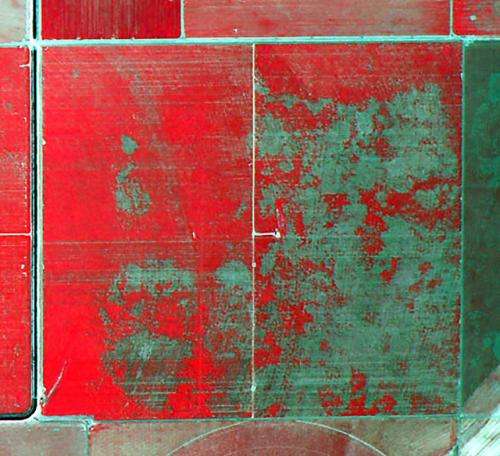Spotting problems and targeting treatments to where they are needed

An agricultural engineer with the U.S. Department of Agriculture (USDA) has developed a practical, cost-effective approach for taking aerial images of cotton fields that are detailed enough to show patches of large fields in need of special attention.
Small aircraft have been used for years to survey fields and treat crops for pest infestations, plant diseases and other problems. But Chenghai Yang, who is with the Agricultural Research Service (ARS) in College Station, Texas, began evaluating whether aerial imagery could spot problem areas within cotton fields when growers started using a new fungicide to control cotton root rot. Root rot infections are usually limited to 20 percent to 30 percent of a field. But many growers treat entire 150- and 200-acre fields, wasting a fungicide that costs about $50 an acre.
Working with Texas A&M AgriLife scientists, Yang mounted two digital cameras on the underside of a small airplane, equipped them with GPS, and took images of cotton fields to see whether they could identify areas with cotton root rot. One camera took standard color images. The other was filtered to shoot in near-infrared. Yang tested the system for 2 years in about 40 flights at altitudes ranging from 1,000 to 10,000 feet on sunny and cloudy days.
Yang's results, published in Remote Sensing (June 2014), show that the equipment could detect the presence, location and the disease progression of cotton root rot, as well as invasive weeds and areas affected by drought stress. The dual-camera system they used cost about $6,000, but Yang says that a $1,500 system with a single camera will also suffice. The camera can be attached to the bottom of an aircraft with minimal modifications. Fees for aerial surveys should be more than offset by reduced pesticide costs, and fewer chemicals will get into soils and waterways, he says.
More information: "An Airborne Multispectral Imaging System Based on Two Consumer-Grade Cameras for Agricultural Remote Sensing." Remote Sens. 2014, 6(6), 5257-5278; DOI: 10.3390/rs6065257
Provided by Agricultural Research Service



















